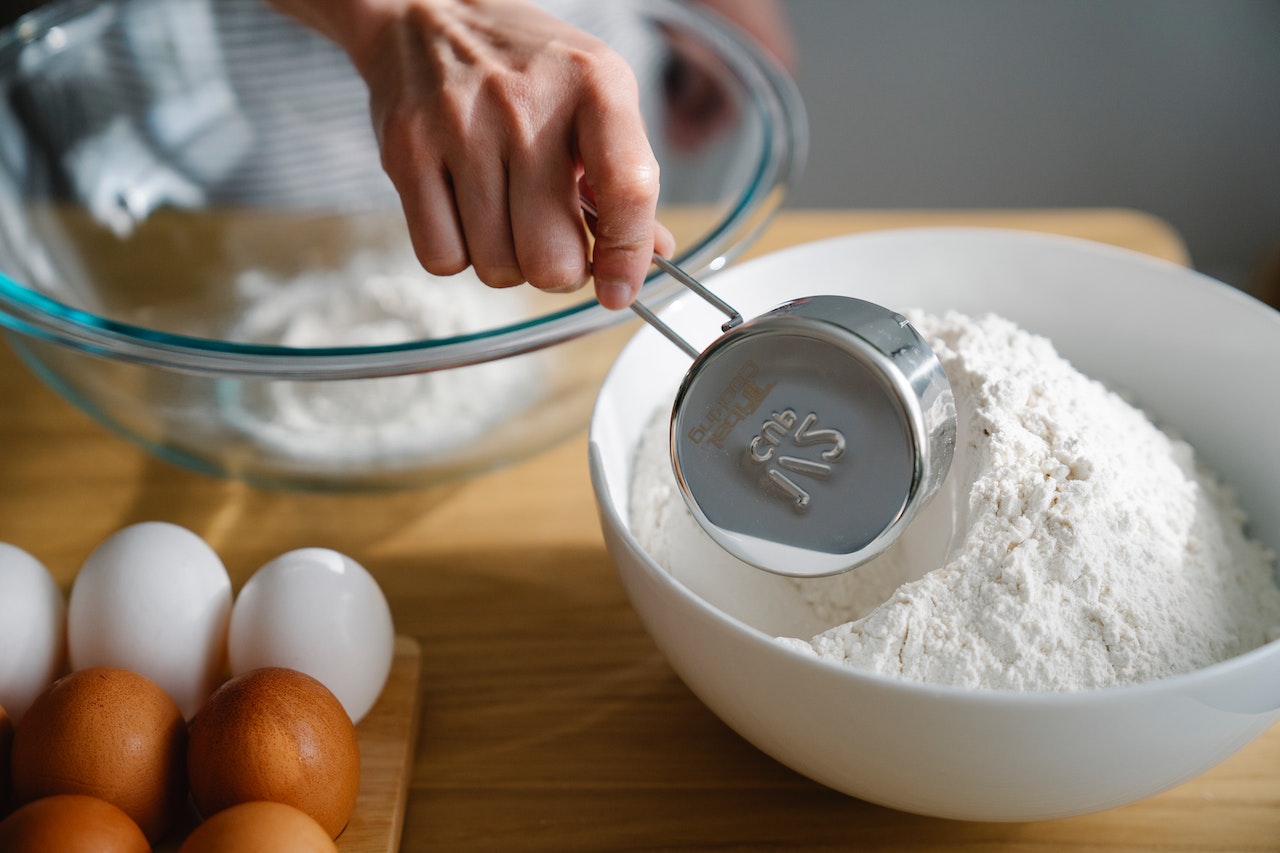Are you wondering: What is the difference between bleached and unbleached flour? If so, you’re not alone. While many home cooks don’t know the difference, telling them apart is pretty simple.
This post will provide a comparison of bleached flour vs. unbleached flour. We’ll place these varieties side-by-side to determine what separates them.
Contents
What Is Bleached Flour?
Bleached flour has been chemically treated with bleaching agents to achieve a brilliant white color. The bleaching process also softens the wheat flour, making it easier to work with.
What Is Unbleached Flour?
Unbleached flour is flour that has not been treated with any bleaching agents. As a result, unbleached flour is more off-white than bleached flour.

This flour contains a bit more protein than bleached flour. Therefore, it offers a slightly chewier texture in baked goods.
What is The Difference Between Bleached And Unbleached Flour?
1. Process
The primary difference between the two is the way they are processed. Bleached flour undergoes a process during manufacturing when chemicals are introduced.
These chemicals whiten the flour and make it more reactive. This means that it can produce a lighter, fluffier final product.
In contrast, unbleached flour is left in its natural state. However, it is bleached naturally over time with exposure to oxygen.
2. Appearance
One way to distinguish between bleached and unbleached flour is through visual examination. Bleached flour is typically a striking white in color. While unbleached flour has a slightly beige color to it.
3. Texture
In terms of texture, unbleached flour produces a slightly chewier result than bleached flour due to its higher protein content. Cakes and biscuits made with bleached flour will be lighter and fluffier. Those made with unbleached flour will be denser and chewier.
4. Usage
Bleached flour has been treated with chemicals to speed up aging, resulting in more refined, lighter flour. Therefore, it’s perfect for delicate baked goods like cakes and pastry dough.

On the other hand, unbleached flour is made from raw wheat that has been slowly aged naturally. Its slightly higher protein content offers more structure, making it ideal for hearty bread, crusts, and rolls.
5. Grade
Bleached flour itself is marginally less coarse than unbleached flour. But this difference is barely detectable.
Conclusion
Bleached flour is your best bet if you’re looking for lighter, fluffier baked goods. But if you prefer a slightly denser, chewier texture, you should opt for unbleached flour.
That said, you could easily use these two types of flour interchangeably. Either way, your baked goods will taste delicious.
And now that you know the answer to the question, “What is the difference between bleached and unbleached flour?”.
